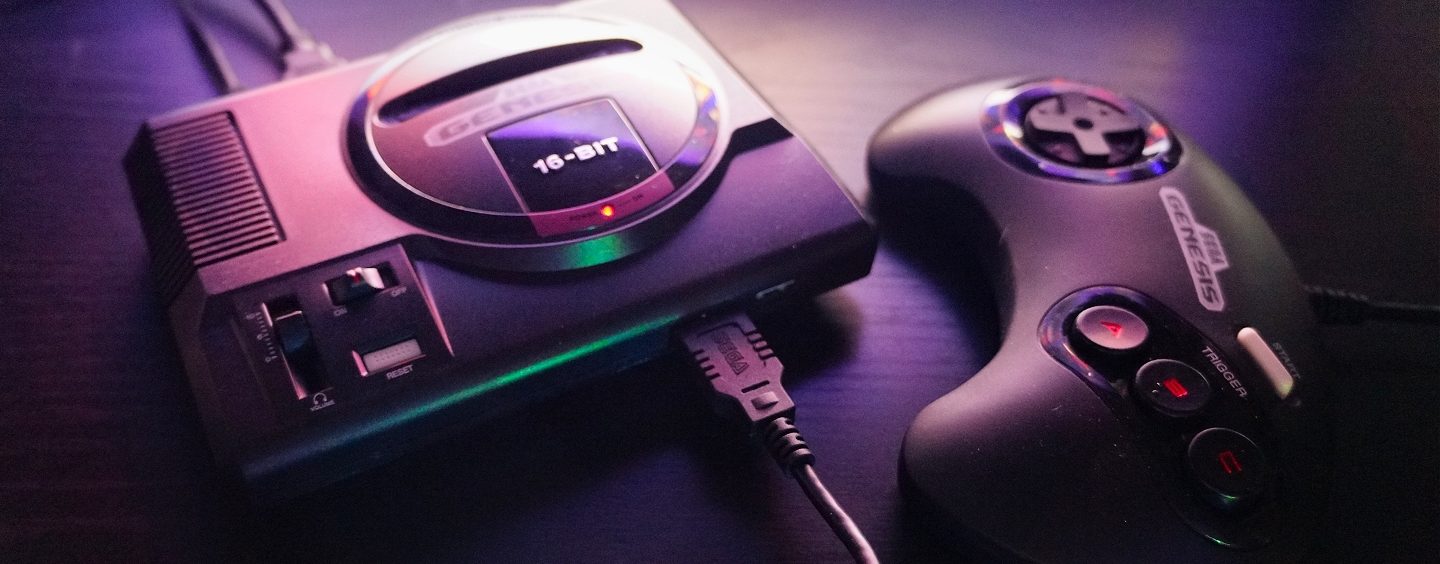
Review: Sega Genesis Mini (Hardware)
Sega is good at preserving their history, but bad at preserving it well. Even before they got out of the console hardware biz with the Dreamcast, they were re-releasing Sega Genesis games in droves, and you’d be hard pressed to find a generation of gaming that did not have a collection of at least some of their 16-bit legacy. They’ve been re-released so often that Sega has resorted to straight up giving them away for free, with the Sega Forever line on phones and tablets. Even people who have no interest in Sega probably own some of these games by now.
But the thing is, most of those versions are bad. The Sega Genesis was a special beast, with an audio chip developed by Yamaha, providing some remarkably clean FM Synthesizer audio on par with arcade machines of the era. It was very prestigious, but in turn, it’s lead to incredible difficulty when replicating that sound after the fact. Even later models of official Genesis hardware don’t sound the same compared to earlier revisions, because the sound is such a finicky thing to get right. The only thing that sounds like a Yamaha YM2612 is a Yamaha YM2612, as it turns out.
And for decades, official Sega Genesis collections have been audibly crippled compared to how they’re intended to sound, a trend that has continued to this very day. The “Sega Genesis Classics” collection released on Nintendo Switch earlier this year has a sharp, warbly tinge to its sound output, like listening to a grungy old MP3 from 2002. Certain sounds, like the sign spinning at the end of a level in Sonic 2, are also straight up broken. And compared to some of the other Genesis collections released in the past, that’s actually considered to be an improvement.

The Genesis Mini employs the talents of a company called M2. If you haven’t heard of them before, their company dates back to the mid-90’s. While they have made original software of their own, their primary claim to fame is as a work-for-hire studio that helps other developers complete difficult projects. More specifically, in the modern context, they’ve become experts in the realm of emulating old platforms, and they’re known for having an eye for detail. They helped Nintendo develop the Virtual Console, they helped Namco and Konami bring their older arcade games to the Nintendo DS, and they’ve been very tightly knit with Sega over the years, particularly with the “Sega Ages” line of re-releases.
And the one thing M2 has gotten pretty good at is accurately replicating the quirks of the Sega Genesis sound hardware. When it came to the Sega 3D Ages releases for the Nintendo 3DS, M2 even included a toggle in some games to flip between different sound modes to represent different models of Genesis hardware. Despite this pedigree, Sega does not always call M2 in to handle projects like this, likely going with faster, cheaper alternatives. Thankfully, Sega opted to request M2’s talents for the Genesis Mini, and the results are pretty good. Notoriously difficult sounds are replicated faithfully, though it still doesn’t sound as clean as I’d like. There’s a hollow, almost metallic undercurrent to the audio now, like the sound output is being crunched down to a lower sampling rate. It’s very similar to how their 3D Ages games sounded on the Nintendo 3DS, so it’s possible this is just what M2 thinks a Genesis sounds like. At the very least, it is leaps and bounds more accurate than past emulation efforts Sega has gotten from other developers.
There are trade-offs you get for that increased sound accuracy, though. The bonus features found in the Switch, PS4, Xbox and PC versions of the Genesis Collection are almost universally missing in the Genesis Mini. There’s no game-specific Challenges, no mirror mode, and no ability to rewind gameplay in real-time. All you really get in terms of modern emulator features are a paltry four save state slots (per-game). Also included is the ability to play versions of each game from different regions, so if you wanted to see Europe’s censored version of Castlevania Bloodlines or the graphically superior Japanese version of Sonic the Hedgehog, you can do that. You can even turn Dr. Robotnik’s Mean Bean Machine back in to Puyo Puyo. Doing so requires changing your system’s language, which is cumbersome, but save states remember which region they were created in. So you could create a save state in a Japanese game, switch back to English, and then load that same state to get back to the Japanese version of the game. It’s a little clumsy, and eats up one of your precious four slots, but it works.
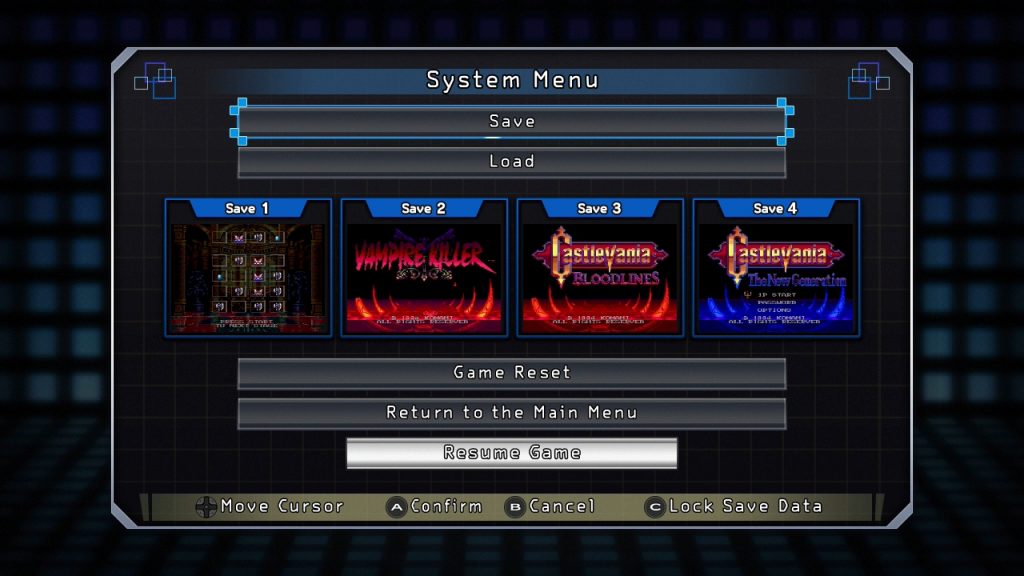
Your only other options are purely visual, and none of them can be configured while a game is running. You can set the games to display in their original 4:3 aspect ratio, with an option to use one of three borders (two pictures and one that’s solid black), or you can stretch the games to fill your entire screen. These options are passable, functional even, but not outstanding. At the bare minimum, I would’ve liked more borders to choose from. Also included is a single, solitary “CRT” filter, which is meant to simulate what these games originally looked like on an old television, and I would consider it among some of the worst retro image filters I’ve ever seen. All it really does is blur the image slightly and add some very dark scanlines. I’m a big fan of CRT filters when they’re done properly, but the one included in the Genesis Mini is clumsy and makes the image dim and hard to look at. It’s such an eyesore that I can’t imagine anyone actually using it.
The other hot button issue when it comes to devices like this (and emulation of retro consoles in general) is latency. That is to say, how long it takes from you pushing a button on the controller to the game reacting to your input. The greater the delay, the less responsive the game feels. And lots of different things can affect latency; emulating a retro console will always be slower than executing game code on the original source hardware, which means it takes extra time for the Mini to translate your button presses.
High-def televisions have latency, too, which varies based on brand, size, and settings. What this generally means is that measuring latency on a device like this isn’t easy, but for what it’s worth, I don’t notice any appreciably greater latency with the Genesis Mini than I do with any other games I own, but I’m also not particularly sensitive to the fine-detail differences in control lag. Speaking with those that are, they suggest latency on the device hangs around three frames of delay, which is apparently a little more than you’d want, but obviously not so terrible as to be unplayable.
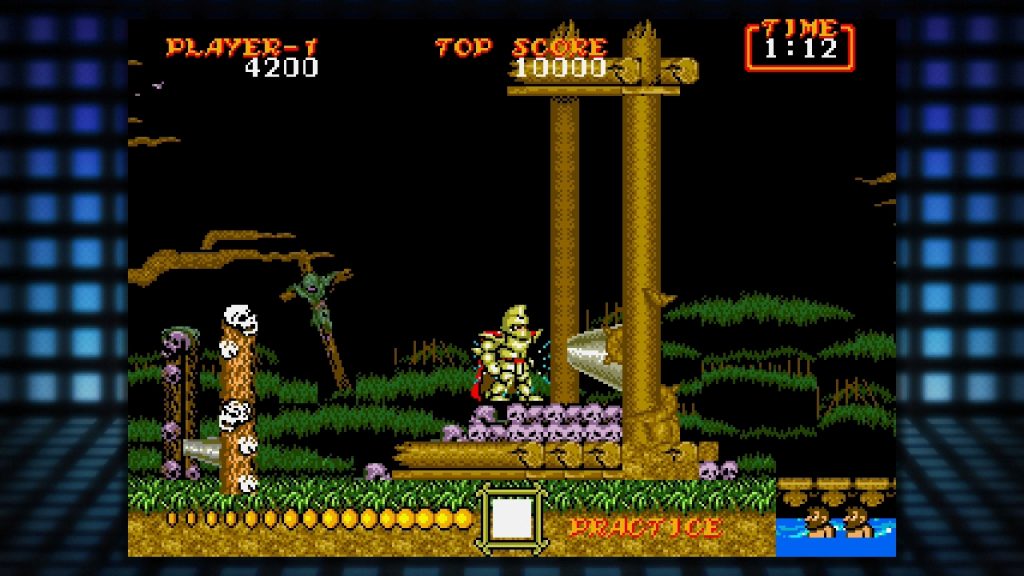
In terms of game selection, the Genesis Mini eschews many of the games Sega more typically leans on for their retro game collections in an effort to present a more complete picture of the Genesis library. Games like Castlevania Bloodlines and Contra Hard Corps cover some of the best third-party exclusives for the platform, whereas games like Earthworm Jim show off some of the more impressive cornerstones of the 90’s. The two Mickey Mouse games demonstrate just what a powerhouse Sega was when it came to licenses, and more obscure games like Alisia Dragoon and Light Crusader show a side of the Genesis most probably aren’t familiar with. They even went out of their way to include games like Monster World IV, which never released in the United States, and even included brand new ports of Darius and Sega Tetris. It’s mostly a pretty solid library all around, though taste is subjective, and there are definitely games I would’ve traded.
For instance, I’d toss out the unnecessary Genesis port of Virtua Fighter 2. Though I understand their historic significance, I’d also cut Golden Axe and Space Harrier 2, as they just don’t play very well anymore. I’m not sure Sonic Spinball needs to be included, either. Axing these games would make room for notable omissions like Ristar, Pulseman, Sparkster, Crusader of Centy, or Alien Soldier. Maybe we could go for a totally left-field pick, like Haunting: Starring Polterguy, a game where you essentially haunt a prototypical family from The Sims by possessing items around rooms and setting traps in order to scare them. It’s extremely short and very simple, but also fun, unique, and exclusive to the Genesis. The Mini has a strong lineup, don’t get me wrong, and it represents a wide picture of Sega in the 90’s, but it could be ever so slightly stronger.
Another bummer is that these games are presented largely as-is. Buried in the configuration menu for the Mini is a QR code where you can download digital PDF instruction manuals for the included games, but those really should have been built in to the device itself somehow. Without their instruction manuals, games like Alisia Dragoon can be a little confusing to wrap your head around, because games from this era still expected you to at least skim the booklet before playing. There will be a day, very likely sooner rather than later, where those digital instruction manuals won’t exist on Sega’s servers anymore, and the QR code linked in the Mini’s configuration menu will be useless. They have all of these manuals scanned in already, and in the case of Monster World IV, they even went out of their way to translate the Japanese manual in to English, so they could have just put those images in the system. Better to include everything all in one place than scatter it all to the winds of the internet.
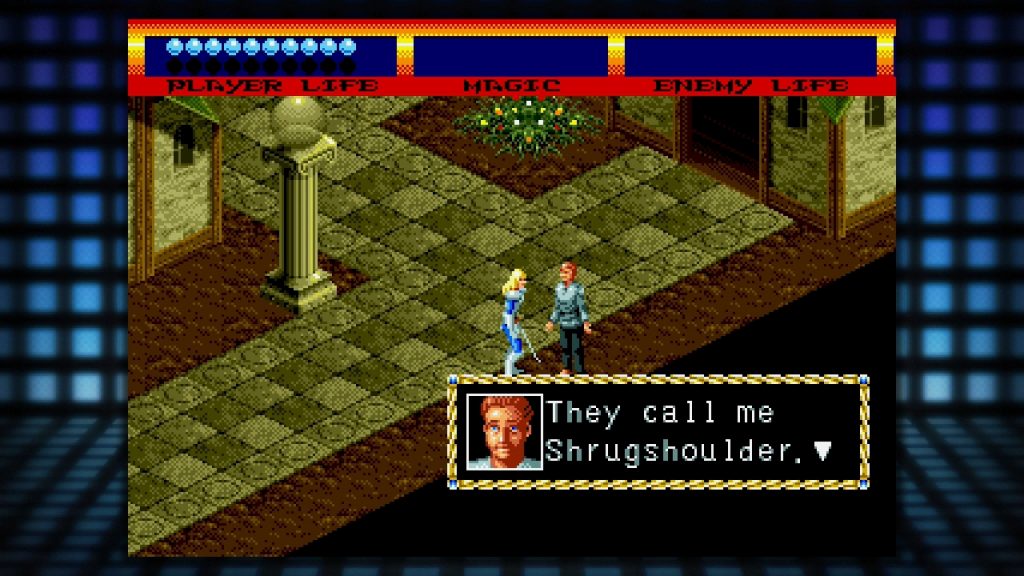
So, let’s be real. Where is the value in something like this? Though Sega’s other collections of Genesis games are definitively worse in a lot of ways, you can always take matters into your own hands on the PC via user-made emulators. And I’m not even necessarily talking about piracy, either; if you go on Steam right now and buy the current Sega Genesis Classics collection, it installs a folder that contains each game’s raw ROM file, legally usable in any emulator of your choosing. Emulators like Regen and Blastem focus on accuracy, meaning they have sound emulation that’s better and cleaner than even M2’s efforts. If latency bothers you, you could look into something like the multi-console mega-emulator RetroArch, which has been developing experimental new features that greatly reduce the input delay typically associated with emulation. And then there are screen filters, of which you have endless options to replicate the look and feel of old displays, or smooth out pixels. Take matters into your own hands, and with a little technical knowledge and some elbow grease, you could have a gameplay experience that far exceeds what Sega is offering with the Genesis Mini, right?
Well, yes and no. As is always the case with the “Mini Console” fad, there’s an element of them being collector’s memorabilia in addition to functional hardware. You’re buying it to have a bit of your childhood back, to feel the controller in your hands again, to play Sonic the Hedgehog on an official piece of Sega hardware. The Genesis Mini does that. It has a plastic hatch you can take off for the Sega CD expansion bay. The flaps on the cartridge slot open and close. You can fiddle with the volume slider. When you turn the system on, the little light glows red just like it should. The buttons on the controller are just the right kind of squishy. They even made fake little cartridges for some of the games, though I’m bitter Sega of America only sent them out to press as promotional material (MY KINGDOM FOR A SEGA TOWER MINI). But the point is, this is just as much about being an object you can hold, and look at, and play with. It’s kind of icing on the cake that this is also the only way to officially buy and play re-releases of games like the original Castle of Illusion, Mega Man: The Wily Wars, or Monster World IV (among others).
And what’s the other option? Buy all this stuff second-hand? Well, for starters, some of these games were never sold in the United States. So you’d have to buy them from somebody doing cartridge reproductions (which is sketchy on multiple levels), and that’s not going to be cheap. We’re talking hundreds of dollars for a console and all your real or fake cartridges, and that’s before you figure out all the work involved with hooking up an old Sega Genesis to a new TV. Worse, you could lug home a 60lb+ CRT TV, if you can still find one. That’s just for the United States games too, and the Mini includes both PAL and Japanese versions of everything, more than tripling the cost of assembling this package on your own.
In that context, the $80 Sega is asking for the Genesis Mini is kind of respectable. Sure, yes, okay — it doesn’t have all the games I’d like. It should’ve included the instruction booklets as a built-in feature. And though I didn’t mention it until now, it really should have come with a six-button controller, considering two games in here practically demand it. And that little red LED that lights up when the console’s turned on? It could even be a little brighter, I say. But when you consider how Sega has handled their other Genesis collections, and what this little hunk of plastic is meant to represent, I don’t feel even an ounce of remorse over having a Mini. I don’t necessarily think it’s for everyone — you absolutely need to be a certain kind of collector, or a 90’s kid looking to recapture a slice of youth to truly get the most out of this thing. But if you are one of those, then you owe it to yourself to pick one of these up, if you can.
This post was originally written by the author for TSSZ News.


![[ID: J693a7hdN4w] Youtube Automatic](https://lastminutecontinue.com/wp-content/uploads/id-j693a7hdn4w-youtube-automatic-60x60.jpg)
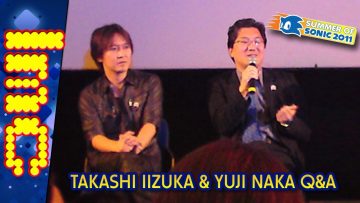
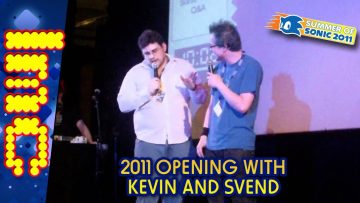
![[ID: qqcyjQOuHOY] Youtube Automatic](https://lastminutecontinue.com/wp-content/uploads/id-qqcyjqouhoy-youtube-automatic-360x203.jpg)
![[ID: K02RYeIXAHo] Youtube Automatic](https://lastminutecontinue.com/wp-content/uploads/id-k02ryeixaho-youtube-automatic-360x203.jpg)